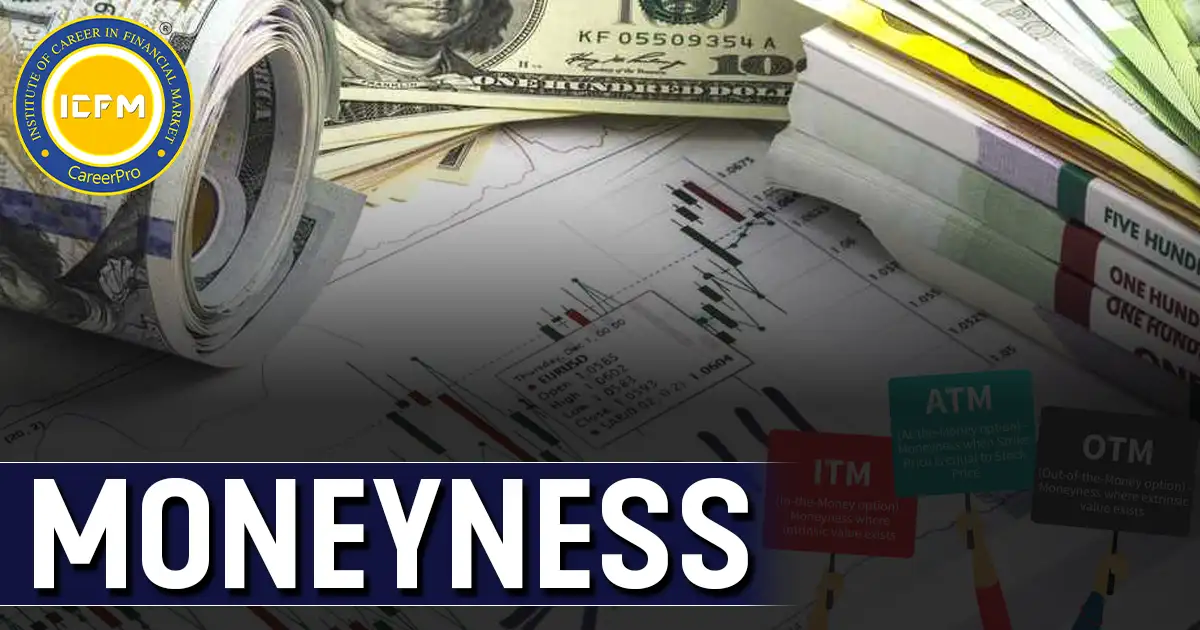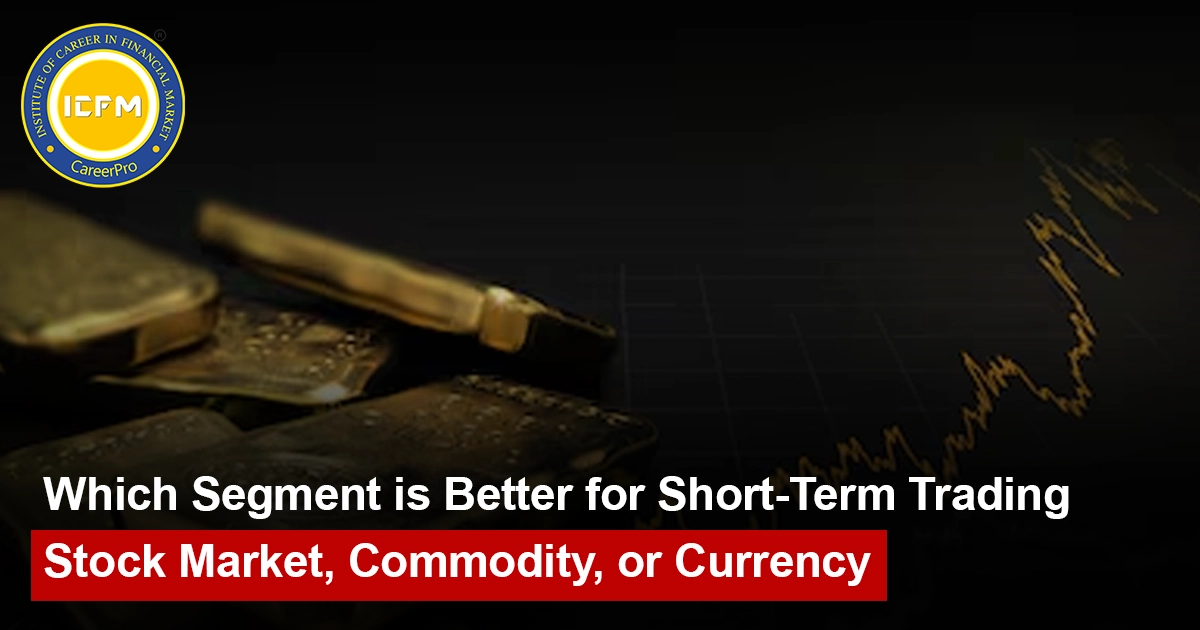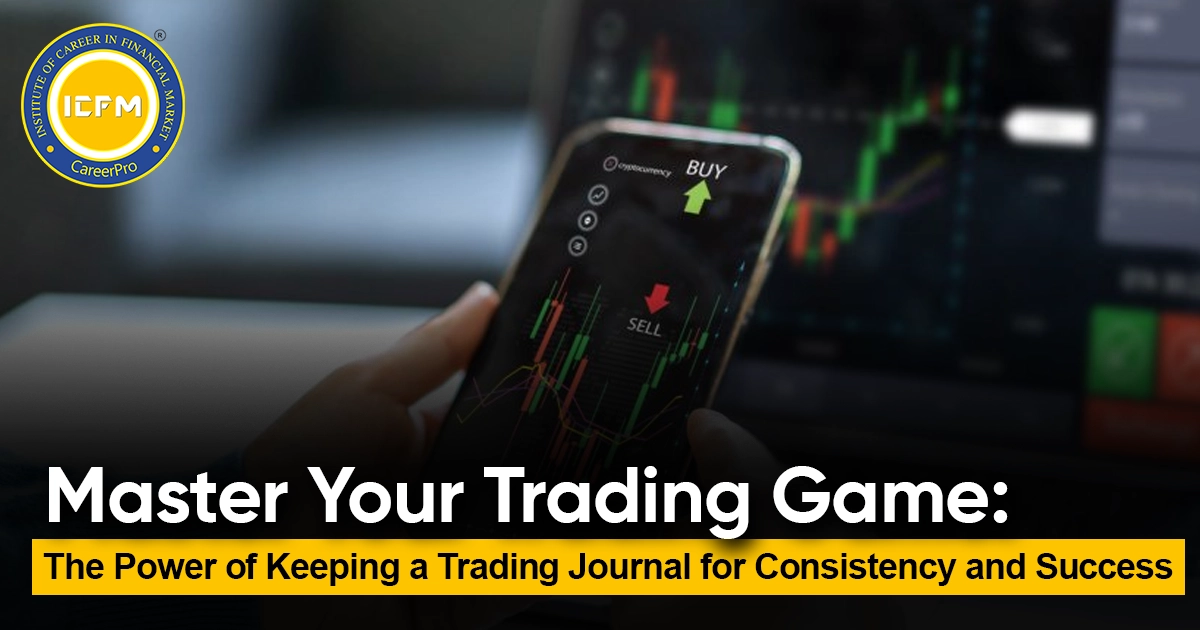Moneyness in Options Trading
Initially, options trading may appear to be too complicated, but once you begin boiling it down into smaller bits, it becomes quite less difficult.
Option-selling is none other than selling people the option, which will allow them to buy a certain share, and must be exercised with an important parameter known as Moneyness.
Understanding Moneyness will help a trader to make an opinion whether the Option is worth exercising or not, in relation to the underlying asset, whether it is In-The-Money, At-The-Money or Out-Of-The Money will determine its effectiveness within a trading plan.
Through this blog, we will set out by explaining smooth the concept of Moneyness, identify the definitions of Intrinsic and Extrinsic value and the way these operations are executed in real trading through simple examples followed.
What exactly is Moneyness?
Moneyness focuses on the relationship between the Strike Price of an Option and the Current Market Price of the particular Stock/Index (or any other underlying asset). Moneyness helps you understand whether exercising your Option contract will be profitable, or it is better to just let the option rest worthless.
Moneyness can be categorized into three levels:
- In the money
- At the money
- Out of the money
The Value of an Option – Intrinsic versus Extrinsic
Moneyness tells an Options trader how much money he can receive if he were to exercise his Option contract today,
An Option Contract price comprises of two components
Intrinsic value, and Extrinsic Value.
The intrinsic value of an option represents its “Real” value. It is the maximum profit that can be made if the option is executed immediately.
These are for the excess value associated with the option which tend to include things like time until it expires left.
It is possible for there to be an extrinsic value because even though the option is out-of-the-money and has no intrinsic value, there is a possibility that the stock price will move towards the favorable side of the person before the option expires.
For A Call option, Intrinsic value = Current Market Price of Stock – Strike Price
For A Put option: Intrinsic value = Strike Price – Current Market Price of Stock
In the case of ATM and OTM options, the intrinsic value is nil, as these options will give no realized gain if exercised.
Let us see what each of these categories means in turn.
1.In-the-Money (ITM):
If an option is currently In-the-money (i.e., it is favorably positioned within the market), it has an immediate payoff.
For a Call Option, an option that grants the holder the ability to purchase underlying shares. ITM in respect to the put option means that the Stock price is lower than the strike. Actually, a put option grants the holder the ability to sell underlying shares at ITM.
Let’s assume that the current market price for XYZ stock is Rs.330.
You own a call option that has a provision of going long in the stock for Rs.300(Strike Price). This means that you possess a right to purchase shares of XYZ Rs.300 and this price is quite attractive as the shares are worth Rs.300. Your option is recorded as being In the money because when you use this right today it provides a positive pay off.
This value is known as Intrinsic value and the Stock Price less Strike Price is called the Intrinsic Value. From this instance the intrinsic value is Rs.30 for each share.
For a put option:
Let us assume that you had a Put option that enabled you to sell the stock for Rs.360 (the put gives you the right to sell at Rs.360). You would be able to realize a profit since you will sell the shares for higher amounts than what they are locked at hence this option would also be In the Money. The Intrinsic Value here would be the Strike Price of Rs.360 and in actual the market is currently at Rs.330. In other words, Intrinsic Value here is Rs.30 per share.
2.At-the-Money (ATM):
An Option is said to be at the money when the Stock Price is approximately equal to the Option Price. This is also known as ‘At the money’. So in practical terms here, the Options don’t really have any Intrinsic Value but there are ATM options with considerable Time Value.
continuing with the case of xyz corp, it is still tradin at Rs 330.
When you are holding a call option or put option with a strike price of Rs.330, the position is At the Money. As the stock price equals the base price that has been set in making the option, exercising that option does not generate a profit neither does it cause a loss.
When the Options are exercised, they do not seem to possess significant Intrinsic Value but with time passage, the At-the-money options provide a potential for options to generate some profits and render them useful to an investor before they expire. This potential is represented by the Time value of the option which is a component in the Extrinsic value of the option.
3. OTM (Out of the Money):
An OTM option is an option that is currently not worth the effort of exercising it. For call options, the OTM price will mean the stock in question is below its strike price. In the case of Put Options, the Stock will be above such options Strike Price.
For example:-
Let’s say, the price of XYZ still remains 330.
You possess a Call option with a 360-strike price. This option is Out-of-the-Money as you possess the right to issue the stock for 360, but the stock is worth 330. There is no logic in exercising this option, as you will pay much higher than the internal worth of the stock.
In the same case, if a call option were held at 300 strikes, it would be out-of-the-money wherein one was seeking to buy the stock worth 300 while it is currently 330. In this case, you would receive less money than if you simply liquidated the shares in the market.
Conclusion:
Understanding Moneyness and the concepts of intrinsic and extrinsic value is crucial for options trading. It allows traders to assess whether to exercise their options based on the current market conditions. By knowing whether an option is ITM, ATM, or OTM, you can make more informed decisions and refine your trading strategy effectively.









